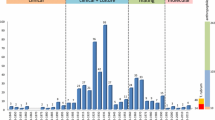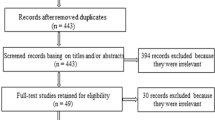Abstract
Recent taxonomical revisions based on multilocus gene sequencing have provided some clarifications to dermatophyte (Arthrodermataceae) family tree. These changes promoted us to investigate the impact of the changed nomenclature of the dermatophyte strains in the BCCM/IHEM fungal collection, which contains strains of all dermatophyte genera except for Ctenomyces. For 688 strains from this collection, both internal transcribed spacer region (ITS) and partial β-tubulin (BT) sequences were aligned and a multilocus phylogenetic tree was constructed. The ITS + BT phylogentic tree was able to distinguish the genera Arthroderma, Lophophyton, Microsporum, Paraphyton, Nannizzia and Trichophyton with high certainty. Epidermophyton, which is widely considered as a well-defined genus with E. floccosum as the only representative, fell within the Nannizzia clade, whereas the phylogenetic analysis, based on the ITS region alone, differentiates Epidermophyton from Nannizzia as a separate genus. Re-identification and reclassification of many strains in the collection have had a profound impact on the composition of the BCCM/IHEM dermatophyte collection. The biggest change is the decline of prevalence of Arthroderma strains; starting with 103 strains, only 22 strains remain in the genus after reassessment. Most Arthroderma strains were reclassified into Trichophyton, with A. benhamiae and A. vanbreuseghemii leaving the genus. The amount of Microsporum strains also dropped significantly with most of these strains being reclassified into the genera Paraphyton and Nannizzia.




Similar content being viewed by others
References
Weitzman I, Summerbell RC. The dermatophytes. Clin Microbiol Rev. 1995;8(2):240–59.
De Vroey Ch. Epidemiology of ringworm (dermatophytosis). Semin Dermatol. 1985;4:185–200.
Seebacher C, Bouchara J-P, Mignon B. Updates on the epidemiology of dermatophyte infections. Mycopathologia. 2008;166(5-6):335–52.
de Hoog GS, et al. Atlas of clinical fungi. Electronic version 4.1. 4. Utrecht: CBS-KNAW Fungal Biodiversity Centre; 2017.
de Hoog GS, et al. Toward a novel multilocus phylogenetic taxonomy for the dermatophytes. Mycopathologia. 2017;182(1–2):5–31.
Gräser Y, et al. Phylogeny and taxonomy of the family Arthrodermataceae (dermatophytes) using sequence analysis of the ribosomal ITS region. Med Mycol. 1999;37(2):105–14.
Gräser Y, et al. Molecular taxonomy of the Trichophyton rubrum complex. J Clin Microbiol. 2000;38(9):3329–36.
Rezaei-Matehkolaei A, et al. Nucleotide sequence analysis of beta tubulin gene in a wide range of dermatophytes. Medical mycology. 2014;52(7):674–88.
Makimura K, et al. Phylogenetic classification and species identification of dermatophyte strains based on DNA sequences of nuclear ribosomal internal transcribed spacer 1 regions. J Clin Microbiol. 1999;37(4):920–4.
Symoens F, et al. Molecular analysis and mating behaviour of the Trichophyton mentagrophytes species complex. Int J Med Microbiol. 2011;301(3):260–6.
Summerbell RC. Form and function in the evolution of dermatophytes. Biology of dermatophytes and other keratinophilic fungi. Rev Iberoam Micol. 2000;17:30–43.
Glass NL, Donaldson GC. Development of primer sets designed for use with the PCR to amplify conserved genes from filamentous ascomycetes. Appl Environ Microbiol. 1995;61(4):1323–30.
White, TJ, et al. Amplification and direct sequencing of fungal ribosomal RNA genes for phylogenetics. In: PCR protocols: a guide to methods and application, vol. 18, no. 1. 1990. p. 315–322.
Zhan P, et al. Phylogeny of dermatophytes with genomic character evaluation of clinically distinct Trichophyton rubrum and T. áviolaceum. Stud Mycol. 2018;89:153–75.
Miller, MA, Pfeiffer W, Schwartz, T. Creating the CIPRES science gateway for inference of large phylogenetic trees. In: Proceedings of the gateway computing environments workshop (GCE), 14 Nov 2010, New Orleans, LA. 2010, p. 1–8.
Ahmadi B, et al. Phylogenetic analysis of dermatophyte species using DNA sequence polymorphism in calmodulin gene. Sabouraudia. 2016;54(5):500–14.
Mirhendi H, et al. Translation elongation factor 1-α gene as a potential taxonomic and identification marker in dermatophytes. Med Mycol. 2014;53(3):215–24.
Rush-Munro FM, Smith JMB, Borelli D. The perfect state of Microsporum racemosum. Mycologia. 1970;62:856–9.
Summerbell RC, et al. ITS barcodes for Trichophyton tonsurans and T. equinum. Sabouraudia. 2007;45(3):193–200.
Beguin H, et al. The taxonomic status of Trichophyton quinckeanum and T. interdigitale revisited: a multigene phylogenetic approach. Med Mycol. 2012;50(8):871–82.
Suh Sung-Oui, Grosso Kendra M, Carrion Miguel E. Multilocus phylogeny of the Trichophyton mentagrophytes species complex and the application of matrix-assisted laser desorption/ionization–time-of-flight (MALDI-TOF) mass spectrometry for the rapid identification of dermatophytes. Mycologia. 2018;110(1):118–30.
Funding
Funding was provided by the Belgian Science Policy (Belspo).
Author information
Authors and Affiliations
Corresponding author
Ethics declarations
Conflict of interest
The authors declare that they have no conflict of interest.
Ethical Approval
This article does not contain any studies with human participants or animals performed by any of the authors.
Additional information
Publisher's Note
Springer Nature remains neutral with regard to jurisdictional claims in published maps and institutional affiliations.
Handling Editor: Sybren de Hoog.
Electronic supplementary material
Below is the link to the electronic supplementary material.
Rights and permissions
About this article
Cite this article
Baert, F., Stubbe, D., D’hooge, E. et al. Updating the Taxonomy of Dermatophytes of the BCCM/IHEM Collection According to the New Standard: A Phylogenetic Approach. Mycopathologia 185, 161–168 (2020). https://doi.org/10.1007/s11046-019-00338-7
Received:
Accepted:
Published:
Issue Date:
DOI: https://doi.org/10.1007/s11046-019-00338-7




